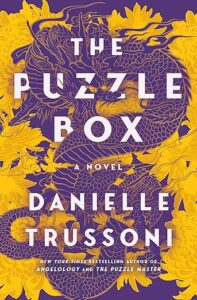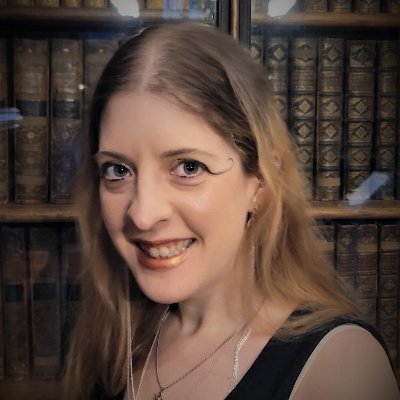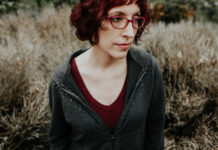I don’t write horror.
I have resolutely said this from the start.
I’m a wuss. Can’t handle gory stuff. Hide behind my fingers watching TV. Sleep with the light on if I’ve been reading something mildly unnerving.
I do write dark fantasy.
With creepy mist that disappears people, a spectre stealing human organs, eyeless corpses, blood magic, and disembodied voices.
Maybe I write some horror elements. But don’t tell anyone.
During editing, my debut novel got a lot darker as I started reading horror books by friends. Reading to give feedback meant I had a layer of separation from the story. It made it more accessible for my anxious brain. I learnt a lot about adding horror elements into my fantasy writing. These are some of the points I found that elevated it from fantasy to dark fantasy with horror elements.
Setting plays a big part. Put your characters somewhere creepy and they’ll start to get twitchy. So will your reader, even if nothing scary is happening. The first book of the Seer of York, The Hiding, starts on the Autumnal Equinox and finishes on Hallowe’en. It’s set in one of the most haunted cities in Britain, where ghost walk tours are advertised on practically every corner and you may well meet a denizen of the past hawking their wares. Every time I travel to York, the surrounding countryside if misty. The buildings and streets are old, wonky, and crowded. It’s probably harder to write York as not-creepy.
Something that’s not quite right. Important as overall atmosphere is, I find it’s the little details that can send chills down my spine. Things that are subtly not right play on the brain and force you to examine the real world around you just in case. It’s something I’ve tried to exploit in my recent short story collection, Reawakening. A mirror reflecting a room with photos that are more yellowed and a carpet that’s more worn. One person mirroring the actions of another perfectly. An innocuous counting song that’s been turned into the basis for murder.
Something previously safe becoming a threat also plays on those same real-life fears. A murder in a church. Home invasion. People disappearing from the local dog-walking park. Make readers question the world around them, things they normally take for granted. We’ve all seen horror based on children’s toys, fairgrounds, or the seaside. Things and places that are supposed to be joyful, treats even, but which might now kill you. When I was six, I had a recurring nightmare that a cannibal clown lived under the doorstep at the entrance to my school cloakroom (no, I had no inadvertently seen It). The memory still gives me the creeps as an adult.
Things not happening. Think of The Shining. I have to admit, I’m too much of a fraidy cat to have read it, so this is based on the film (I’ve heard the book is worse). For a lot of the film, nothing happens. It’s an (almost) empty hotel and endless corridors. But you know something might happen and so the tension increases. Absence of sound is another trigger. It’s so rare in real life that when it happens in a book your ears are straining for what they know is missing. A cessation of birdsong is often used in fiction to indicate a predator nearby.
Utilise character interiority. A great advantage of books over other media is the ability to show character reactions that no one else might notice. Things like a churning stomach, goosebumped skin, aching bones and nerves, and changes in how the character is thinking are harder to show on film. In a book, it can put the reader in the character’s shoes. Putting the reader behind the character’s eyes can also increase mystery. If they don’t know it, we don’t know it. If they think there’s something lurking in the mists, then the reader can’t be sure whether there is or isn’t. The Emotion Thesaurus and similar books can be helpful to get the ball rolling if you’re stuck on how to show something.
Don’t forget your other senses. What can be seen, or even heard, is fairly standard to see in a book, but don’t forget the other senses. Scents are a strong memory trigger, so if your tension is from a traumatic past, scents are a good way to trigger panic. Reaching into the unknown and encountering a slimy or sinuous texture is alarming. The Hallowe’en ‘haunted house’ at my secondary school had one of those blind boxes where you stick your hand in. Even though you know it’s just jelly or something equally innocuous, there’s a stomach clenching moment as your fingers sink into it. I’m arachnophobic, so scurrying feet over skin or sticky webs freak me out when I read them. Taste can be a difficult one, we’re not aware of it all the time, but it plays nicely into interiority. Then there’s that sixth sense, the someone-is-watching-me tingle, the slight precognition we sometimes seem to have. It’s ethereal, and that makes it perfect to exploit in fiction no matter what you believe to be ‘fact’.
This is all general skin-prickling, shoulder blade-itching, feelings disconcerted. What’s different about a fantasy setting that increases the tension. For me, it’s something that the best psychological horror has. Doubt. Are they crazy or is the old woman in the woods a witch? Is it someone gaslighting or is the attic haunted? Are they psychotic or possessed by a demon? Sometimes, the horror is our world and it is all a ruse or derangement. Sometimes, it’s horror with fantasy elements and vampires and ghosts do exist. The lines are blurry. Sometimes, you never know.
In fantasy, as a baseline, anything can be true if you can make it plausible.
There’s a whole range of new societal paranoia to explore (I enjoy delving into this one in my series), different superstitions to exploit, and the possibility of magic, ghosts, deities, and a whole array of supernatural creatures.
Fantasy gives fears reality.
Nowhere near a complete list of making a creepy atmosphere in a book, but hopefully a few things to ponder. Wishing you all a bone-chilling spooky season.
Here’s a quick look at
 After centuries of suppression, the magic of England is
After centuries of suppression, the magic of England is
Reawakening
Return to the world of The Seer of York with this collection of new tales set in the aftermath of The Hiding.
Harper, Grace, Saqib, Heresy, and AJ bond as a team and as a family to save innocents, supernatural and human, despite hunters pursuing them.
Introducing Zero, a starlight cat with a bleak and painful past.
Demonic-possession
Faery circles
Pūcas
And more…






